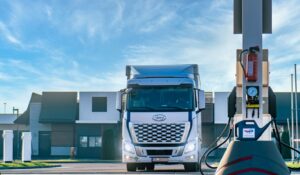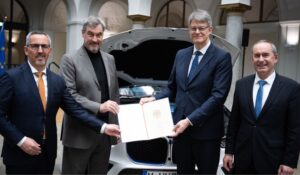Hopium targets boats and bin lorries as court process ends and €12.5m funding lands

Hopium has now fully exited court protection, secured fresh funding, and outlined a new phase of development focused on early commercial use cases for its hydrogen fuel cell systems – starting with boats and bin lorries.
The French firm confirmed this week that the court-approved continuation plan (plan de redressement) is now final, with the appeal period expired.
A €12.5 million bond deal with Atlas Special Opportunities gives the company enough runway to fund development and production through to the second quarter of 2026.
With that in place, Hopium is pushing ahead with a focused strategy, which is to get their hydrogen fuel cell technology working in real applications, in places where hydrogen makes immediate sense.
Niche first: semi-rigid boats and urban trucks
Hopium says it will start with high-value, lower-volume markets that can absorb the current costs of fuel cells – specifically marine vessels, aerospace, and certain municipal vehicles.
The most developed project right now is a 200kW system for marine use, based on two of the firm’s 100kW stacks.
Bench testing is already underway, and Hopium has begun adapting the system for use on semi-rigid boats (RIBs).
The plan:
- Integrate the full fuel cell powertrain into a 10-15 metre vessel in Q3 2025
- Begin real-world testing on the water in Q4 2025
The company says it’s factoring in the specific demands of the RIB market – vibrations, shock loads, rapid acceleration – from the design stage.
It also sees good commercial potential here, calling it a market with “potentially significant sales volumes”.
Bin lorries could come next
Hopium is also targeting early road applications that don’t rely on massive roll-out to make financial sense.
One such case is refuse collection trucks. These vehicles operate intensively in stop-start urban conditions, return to depot daily for refuelling, and have high energy demands – all of which suit hydrogen rather well.
The company says it has received “numerous expressions of interest” from public operators, and sees this segment as a realistic near-term use case – even ahead of broader deployment in long-haul trucking.
Stack development continues
On the technical front, Hopium is continuing to improve performance and durability, now using the S++® diagnostic plate to better analyse how key variables like temperature and pressure affect ageing, and to reduce simulation uncertainties in R&D.
The company now holds 16 patents on its fuel cell system, with around 10 more filings underway. It also expects to receive over €150,000 in research tax credits for 2024 under the French government’s CIR scheme.
Strategy aligned with French national hydrogen policy
Hopium’s focus on marine and municipal applications lines up with the French government’s updated National Strategy for Carbon-Free Hydrogen, published on 16 April 2025.
The state’s latest roadmap puts clear emphasis on supporting hydrogen adoption in heavy-duty and specialist segments.
Hopium says it will use these early niche markets to refine and scale its stack design, with the goal of offering a competitive diesel alternative for trucks by 2028–2030.
“A decisive turning point for Hopium”
CEO Stéphane Rabatel described 2024-25 as a year of transition. “The approval of our continuation plan has strengthened our financial position.
“This new lease of life allows us to continue the technological development of our fuel cell, the heart of our solution for carbon-free heavy-duty mobility, and to resume our discussions with industrial players, who now have complete visibility into our financial structure.”
Hopium is no longer trying to build a car. But with funding in place, the stack now in bench testing, and a boat build on the way, it might finally be in a position to build something that moves.











